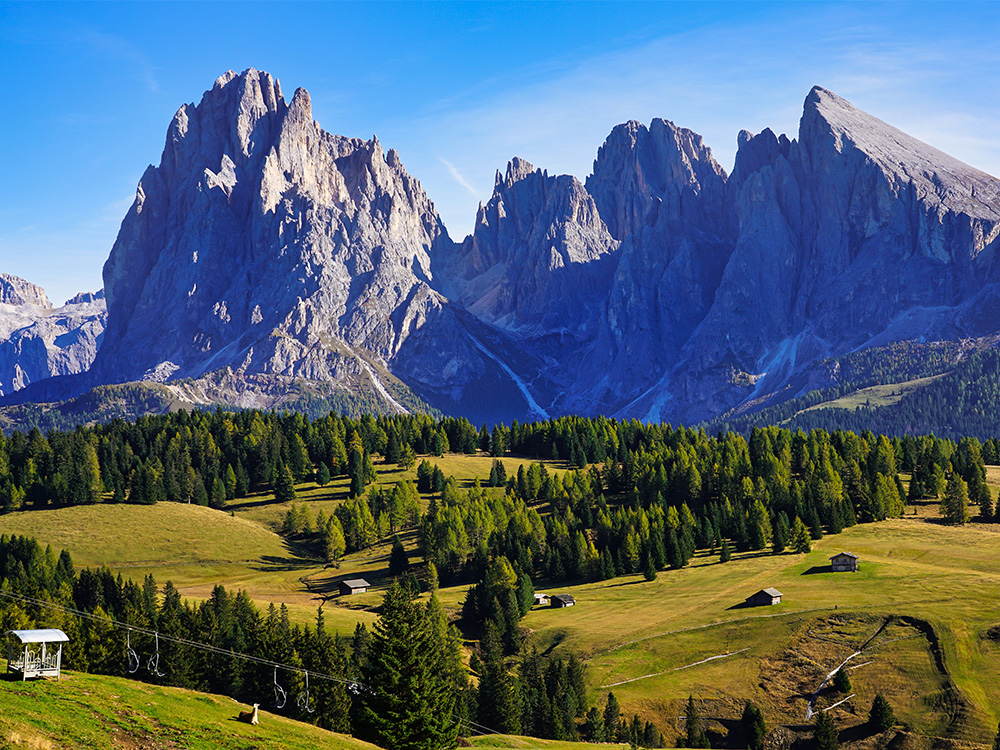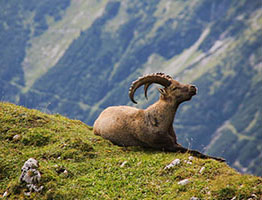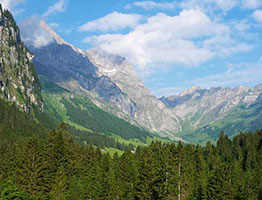Discover the unique geology and enchanting landscapes of this UNESCO World Heritage Site.
The Dolomites: a mountain range in northern Italy with no fewer than 18 peaks above 3,000 metres. Intrigued by this mountain range, I wondered why these mountains are so different from their counterparts in Austria and Switzerland, for example. What makes the Dolomites so special? Especially for you (and of course a little bit for myself), I set out to find out, so that you know why you should go on holiday to the Dolomites.
The geology of the Dolomites
The Dolomites are notable for their jagged mountain peaks and the pale colour of the rock. The mountains in the rest of the Alps often have rounded, massive peaks and are dark in colour because they are made of granite and gneiss.
The Dolomites were once a tropical sea full of coral reefs and atolls. This explains why you can find many fossils here and why the mountain peaks have a completely different shape. Here you will find steeply rising, slender peaks, towers, bizarre rock formations and vertical walls consisting mainly of dolomite rock. This rock is rich in magnesium-containing calcium carbonate, which is naturally light in colour. The Dolomites are therefore nicknamed the “pale mountains”.
Enrosadira
Dolomite rock has a special property. It reflects light, making it appear even lighter. This creates a unique natural spectacle, especially at sunrise and sunset. When the sun shines on the walls of the jagged rock formations, a beautiful palette of pink, orange and even deep red hues becomes visible. In Italy, this is called Enrosadira and is one of the characteristics for which the Dolomites are famous. In German, this phenomenon is called “Alpenglühen”. It is also known in the rest of the Alps, but because of the light-coloured rock of the Dolomites, it is most beautiful in this mountain region.
Hiking is unique in the Dolomites
The varied landscape is perfect for beautiful hikes in the mountains. Gentle, rolling alpine meadows stretch out between the jagged rock formations. You can enjoy hiking here while admiring the spectacular and bizarre mountain towers. A very well-known place is the Seiser Alm (Alpe di Siusi), the largest high-altitude alpine meadow in Europe, which contrasts beautifully with the surrounding steep peaks. It is precisely this contrast between the green alpine meadows and the rugged mountain peaks that is characteristic of the Dolomites.
Via Ferratas in the Dolomites
The vertical rock formations make the Dolomites ideal for via ferratas (climbing routes). These are pre-established climbing routes with steel cables, ladders and brackets. If you enjoy this, the Dolomites are the place to go. This activity is very popular there and there are routes for beginners to experienced climbers, offering the most beautiful views.
UNESCO World Heritage Site
In 2009, the Dolomites were officially recognised as a UNESCO World Heritage Site. They received this designation because of their unique geological and landscape features, which are of exceptional universal value. They are recognised for their striking beauty, the diversity of their flora and fauna, and their rich geological history. If that's not proof that the Dolomites are worth a visit, what is?
Famous places in the Dolomites that you must see
The Dolomites have many beautiful places to visit during a mountain holiday, but there are a few that are particularly photogenic and perfectly capture the unique character of this area.
Tre Cime di Lavaredo (Drei Zinnen)
These three pointed peaks are the world-famous symbol of the Dolomites. You will find them on almost every postcard of this mountain range, because they perfectly reflect the dramatic vertical rock formations of the dolomite rock, which are more impressive here than anywhere else in the Alps. A circular walk around the three peaks offers a magnificent view of these natural cathedrals and the surrounding mountain world.
Lago di Braies (Pragser Wildsee)
This is a fairytale emerald green mountain lake, surrounded by dense pine forests and the imposing, steep rock faces of the Dolomites. It is the ultimate place to experience the magic of the Enrosadira, when the pale mountain peaks light up in fiery pink and red hues at sunset and reflect beautifully in the serene water.
Seceda
Seceda is known for its extremely sharp, jagged ridges that seem to protrude from the earth like giant rock fingers, with the iconic Odle/Geisler group in the background. This panoramic view is also very well known and photogenic. They are a good example of the unique, erratic erosion patterns that characterise the dolomite rock. A stark contrast to the gentler peaks elsewhere.
Alpe di Siusi (Seiser Alm)
I have already mentioned the Seiser Alm above, but this largest high-altitude alpine meadow in Europe is worth emphasising again. It is the ideal place to contemplate the contrast between the rolling alpine meadows and the jagged rock formations during a leisurely walk.
Marmolada
The Marmolada is the highest mountain and queen of the Dolomites. With a height of 3,343 metres, it towers above everything else. It is also home to the only glacier in this mountain range.
Be aware when visiting these destinations. They are well-known and beautiful, and therefore popular with tourists. Keep this in mind when making your travel plans. For example, plan your holiday in the Dolomites outside of the holiday season and visit these locations early in the day.
Away from the crowds: two lesser-known destinations in the Dolomites
Val di Funes (Villnößtal)
The famous Odle/Geisler group is beautifully visible from this valley. The valley itself is an idyllic landscape of green alpine meadows, charming church towers and traditional farms, with dramatic, pointed rock faces in the background. From this valley, you can go on beautiful walks where you can easily escape the crowds.
Val di Zoldo
This valley is located in the south of the Dolomites and offers authentic mountain villages, traditional hospitality and impressive peaks such as Monte Civetta and Monte Pelmo. This area is less focused on mass tourism and feels more intimate and unspoilt. The proximity of the imposing Civetta wall, which often turns pink, is a beautiful example of the Enrosadira in a less visited place.
The Dolomites are indeed a unique mountain range in the Alps. The different type of rock and the jagged peaks make this a special mountain range and truly different from its counterparts in Austria, Switzerland and France. So if you are planning a holiday in the mountains but are still unsure where to go, consider the Dolomites for a unique experience.







